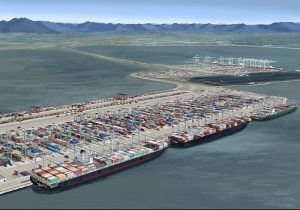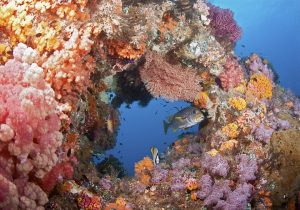Deep Subtidal Waters
The Roberts Bank Terminal 2 (project) has been approved to be developed as a marine container terminal on Canada’s West coast. Its location in deep subtidal waters is designed to minimize environmental effects. The burden will not be on the taxpayer as the port authority will finance the project.
The federal government in Ottawa, after a ten-year review process with the lead taken by Impact Assessment Agency of Canada, approved constructing a second container facility adjacent to the Port of Vancouver’s Deltaport terminal at Roberts Bank.The new container terminal ,estimated to come with a price tag of $ 3.5 billion, will take around 6 years to build and will accommodate a 3 berth 2.4 m TEU terminal.Container handling capacity would rise by almost 50 % at this port also being Canada’s largest port and export gateway. The upside is that Canada’s national supply chain resilience will be strengthened for the betterment of Canadian businesses. The project entails creating an artificial peninsula or island 30 km South of Delta municipality . The justification for the project is based on assumptions that shipping container capacity is insufficient to cater to an anticipated jump in imports and affordability of consumer goods originating from China, Japan, South Korea and other parts of Asia.
 Credit THEWESTERNPRODUCER
Credit THEWESTERNPRODUCER
Logistics and Feasibility
The Port of Vancouver’s present container terminals handle upto $ 275 billion worth of goods each year. Like other West coast ports Vancouver experiences land sliding, excessive rains and wildfires severely damaging rail and road routes which in turn drastically impede imports at the port. Vessel congestion has essentially disappeared but rail flows get snarled.Parallel to the Roberts Bank Terminal 2 interstate , rail capacity and networks will have to be enhanced to cater to increased container movement. A comparison of rail on-dock dwell times at 3 container terminals depicts 3-5 days at Vanterm, 5-7 days at Deltaport and more than 7 days at Centerm. The port’s Centerm container terminal rail footprint had to be increased from 245 km to 460 km.The selection of a terminal operator is to be done prior to entering the construction phase. Relying on input from third party container traffic forecasts the project has been designed to support the long term growth trajectory of the West coast container trade and to prevent diversion of Canadian destination trade to US ports. The economic and commercial feasibility of Roberts Bank Terminal 2 is facing criticism as Port of Prince Rupert in Northern British Columbia nurtures a desire to expand container capacity by 2 million TEU’s annually by 2030 and Canada’s Western ports may compete amongst itself unless imports of consumer goods sharply rise.
Employment generation and Automation
What is worrying for the labor unions is the automation and digitalization processes planned to be the hallmark of the proposed Roberts Bank 2 terminal. As in the case of automation the port’s Centerm container terminal automation reduced truck processing time from 4.5 minutes to 45 seconds to remain economically viable and to reduce the cost of doing business. The Vancouver Port Authority estimates that almost 3,000 direct and indirect jobs will be created during the construction phase and container operations will sustain 800 full-time jobs at the container terminal.
 Credit Scientific American
Credit Scientific American
Environmental concerns
 Credit UNEP
Credit UNEP
The federal government’s approval of Roberts Bank Terminal 2 comes with 370 legally binding conditions ranging from conservation of Salmon, whales, Western Sandpipers to sustain decline in mudflat biofilms being a critical food source for migratory and shorebirds . The Vancouver Fraser Port Authority’s plans for the Roberts Bank Terminal 2 remains a contentious project.
By Nadir Mumtaz

Leave A Comment